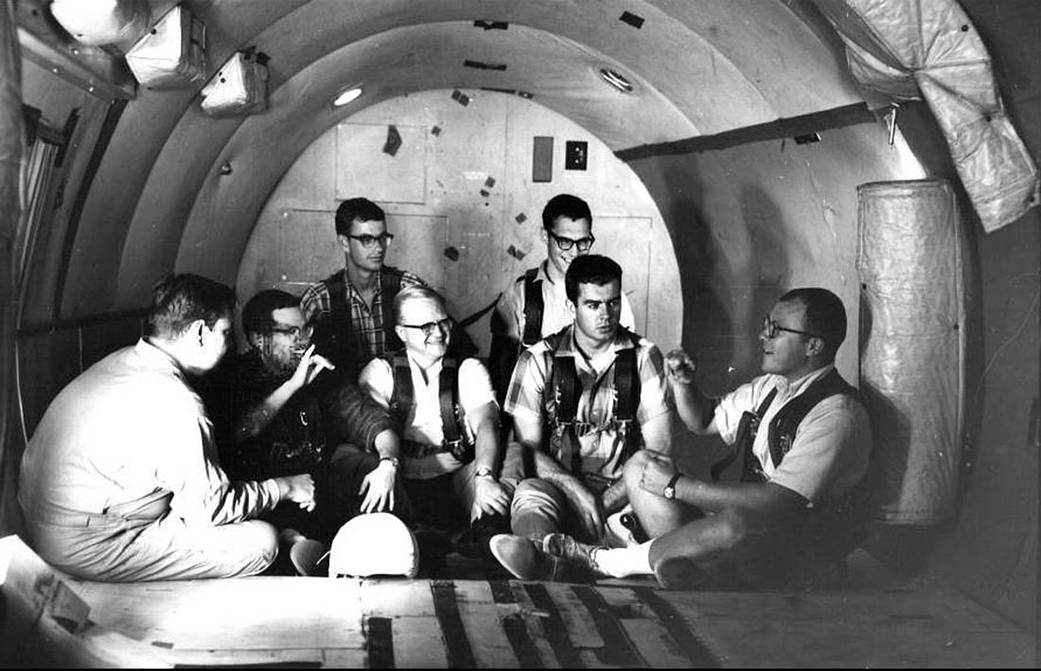
Harold Domich. Robert Greenmun. Barron Gulak. Raymond Harper. Jerald Jordan. Harry Larson. David Myers. Donald Peterson. Raymond Piper. Alvin Steele. John Zakutney.
Before NASA could send humans to space, the agency needed to better understand the effects of prolonged weightlessness on the human body. So, in the late 1950s, NASA and the U.S. Naval School of Aviation Medicine established a joint research program to study these effects and recruited 11 deaf men aged 25-48 from Gallaudet College (now Gallaudet University). Today, these men are known to history as the “Gallaudet Eleven.”
In this image, the study participants chat in the zero-g aircraft that flew out of Naval Air Station in Pensacola, Fla.
In 2017, Gallaudet University and NASA celebrated the achievements of these little-known pioneers. All but one of the men had become deaf early in their lives due to spinal meningitis, which damaged the vestibular systems of their inner ear in a way that made them “immune” to motion sickness. Throughout a decade of various experiments, researchers measured the volunteers’ non-reaction to motion sickness on both a physiological and psychological level, relying on the 11 men to report in detail their sensations and changes in perception. These experiments help to improve understanding of how the body’s sensory systems work when the usual gravitational cues from the inner ear aren’t available, as is the case in spaceflight.
#NationalDisabilityEmploymentAwarenessMonth
Image Credit: U.S. Navy/Gallaudet University Collection

























